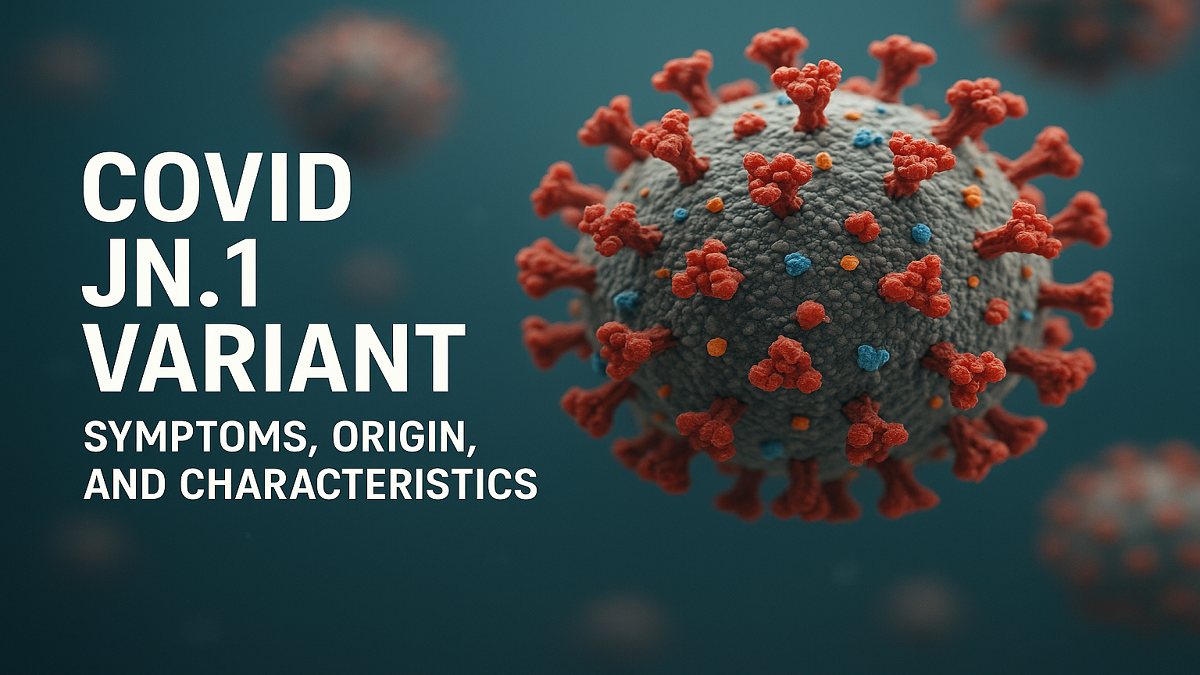As the world adapts to life after the initial COVID-19 pandemic, new variants continue to emerge, challenging public health strategies and population immunity. Among the most recent and widely discussed is the JN.1 variant, a descendant of the Omicron family. This variant has been linked to a resurgence of cases across Asia, especially in countries like Singapore, Hong Kong, China, and Thailand. But what exactly is the COVID JN.1 variant, and how does it differ from its predecessors?
Origin of the JN.1 Variant
Omicron Lineage and Evolution
The JN.1 variant is a sub-lineage of the Omicron BA.2.86 variant, also known informally as ‘Pirola’. It was first identified in August 2023 and later classified as a Variant of Interest (VOI) by the World Health Organization (WHO) in December 2023.
What makes JN.1 notable is its high number of mutations — especially in the spike protein, the part of the virus that binds to human cells. With around 30 spike protein mutations, JN.1 was engineered by natural evolution to escape existing immunity, including that provided by vaccines or prior infections.
Geographic Spread and Impact
Initially detected in Europe and the United States, JN.1 has now been reported in Asia, where it is driving a new wave of infections. Countries like Singapore and China are seeing rapid increases in case numbers, largely attributed to JN.1 and its descendants, including LF.7 and NB.1.8, which collectively account for over two-thirds of recent cases in some areas.
Key Characteristics of the JN.1 Variant
Immune Evasion Capabilities
One of the defining traits of the JN.1 variant is its ability to evade immune responses. According to researchers at Johns Hopkins University, JN.1 has acquired additional mutations that allow it to spread more efficiently while retaining its immune escape capabilities.
Experts at Yale Medicine noted a key mutation in the spike protein that may offer extra resistance to neutralizing antibodies, even though the full impact of this mutation is still being studied. This means that people who were previously vaccinated or infected may still be susceptible to JN.1.
Increased Transmissibility
Compared to its parent BA.2.86, JN.1 is believed to be more transmissible. This has allowed it to spread rapidly in densely populated regions, especially those where population immunity has waned due to the passage of time since the last major wave or vaccination drive.
Unusual Seasonal Activity
Health experts have also pointed out that JN.1 is spreading during the summer months — a time when respiratory viruses typically recede. This unusual trend indicates that environmental factors may no longer significantly inhibit COVID-19 transmission, especially with evolving variants like JN.1.
Symptoms of the JN.1 Variant
The symptoms associated with the JN.1 variant are largely similar to those seen with previous Omicron sub-variants, though some patients report greater fatigue or longer recovery periods.
Common Symptoms Include:
- Sore throat
- Runny or stuffy nose
- Fever or chills
- Dry cough
- Fatigue or body aches
- Headache
- Loss of taste or smell
- Mild shortness of breath
While most cases remain mild and manageable at home, people with underlying conditions, the elderly, or those with weakened immunity may face more complications and should seek medical attention if symptoms worsen.
Why JN.1 Matters: Public Health Implications
Waning Immunity is a Key Risk Factor
One of the primary concerns surrounding the JN.1 variant is its potential to exploit waning immunity. Many people across the world received their COVID-19 vaccines in 2021 or 2022, and over time, antibody levels have declined. According to Dr. Vikas Maurya, a pulmonologist at Fortis Shalimar Bagh, countries like India may see a similar spike if immunity levels are not boosted.
Endemic Yet Active
Dr. Sandeep Budhiraja, Group Medical Director at Max Healthcare, emphasized that COVID-19 has never fully disappeared. “It has remained endemic, capable of causing localized or regional outbreaks,” he stated. JN.1 is a reminder that vigilance is still required, even though the global emergency phase of the pandemic is over.



 Andrej Babis Sworn In as Czech Republic’...
Andrej Babis Sworn In as Czech Republic’...
 Lithuania Declares State of Emergency Ov...
Lithuania Declares State of Emergency Ov...
 Operation Sagar Bandhu — Indian Navy Sen...
Operation Sagar Bandhu — Indian Navy Sen...







